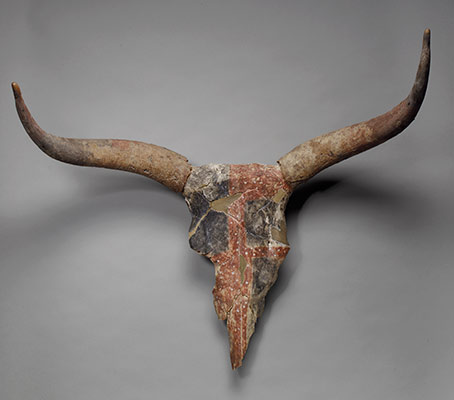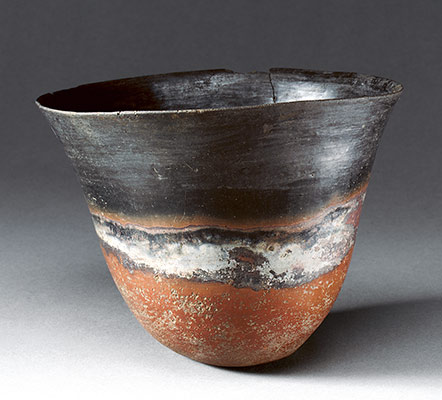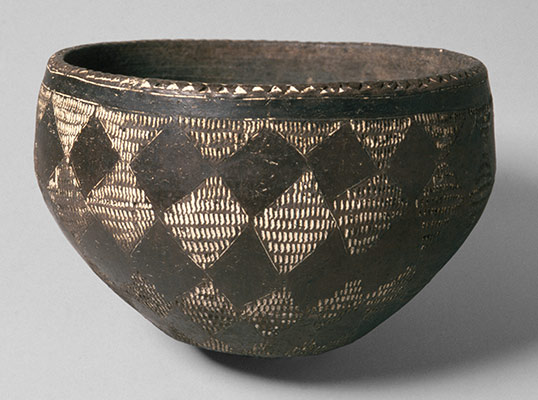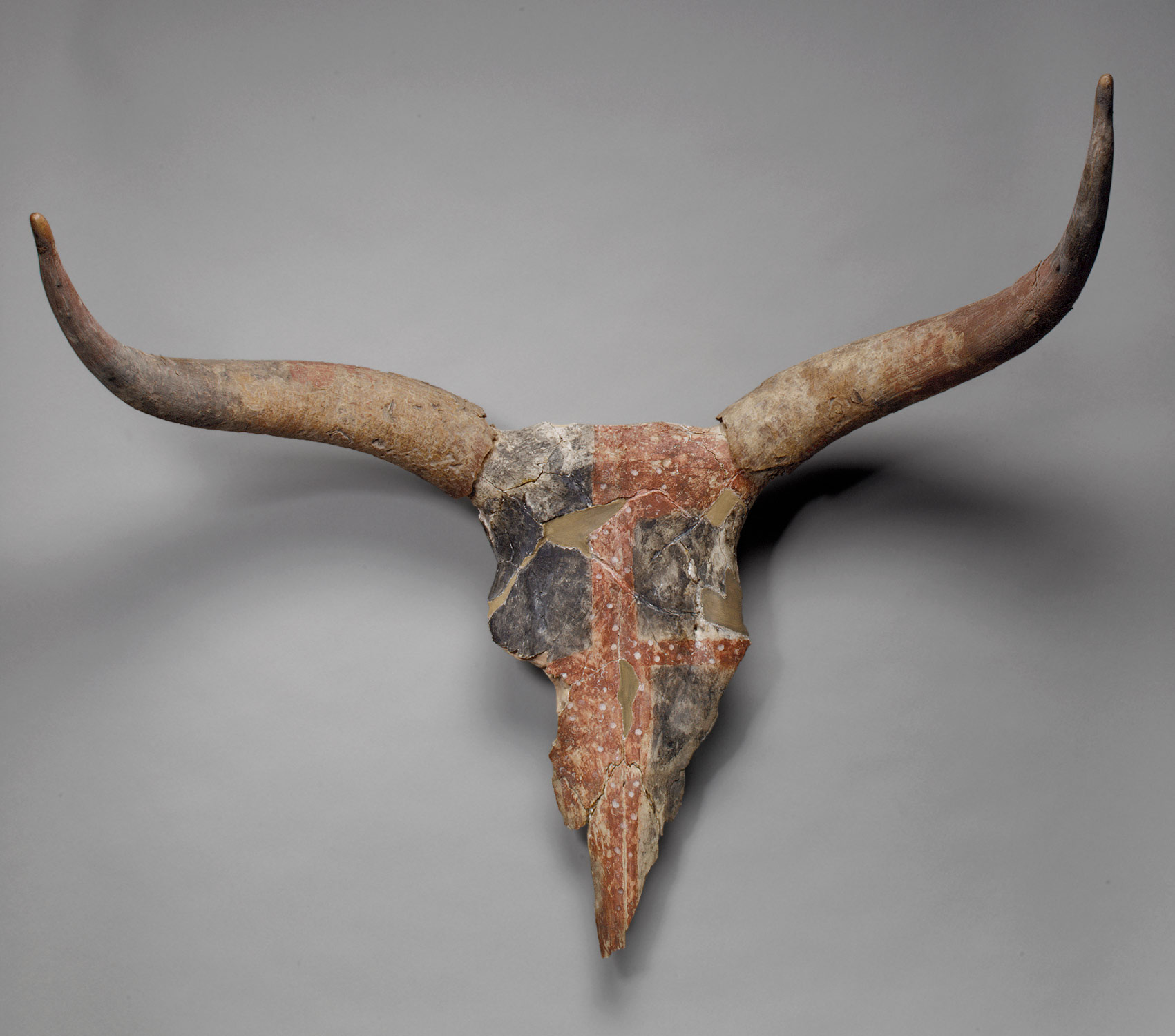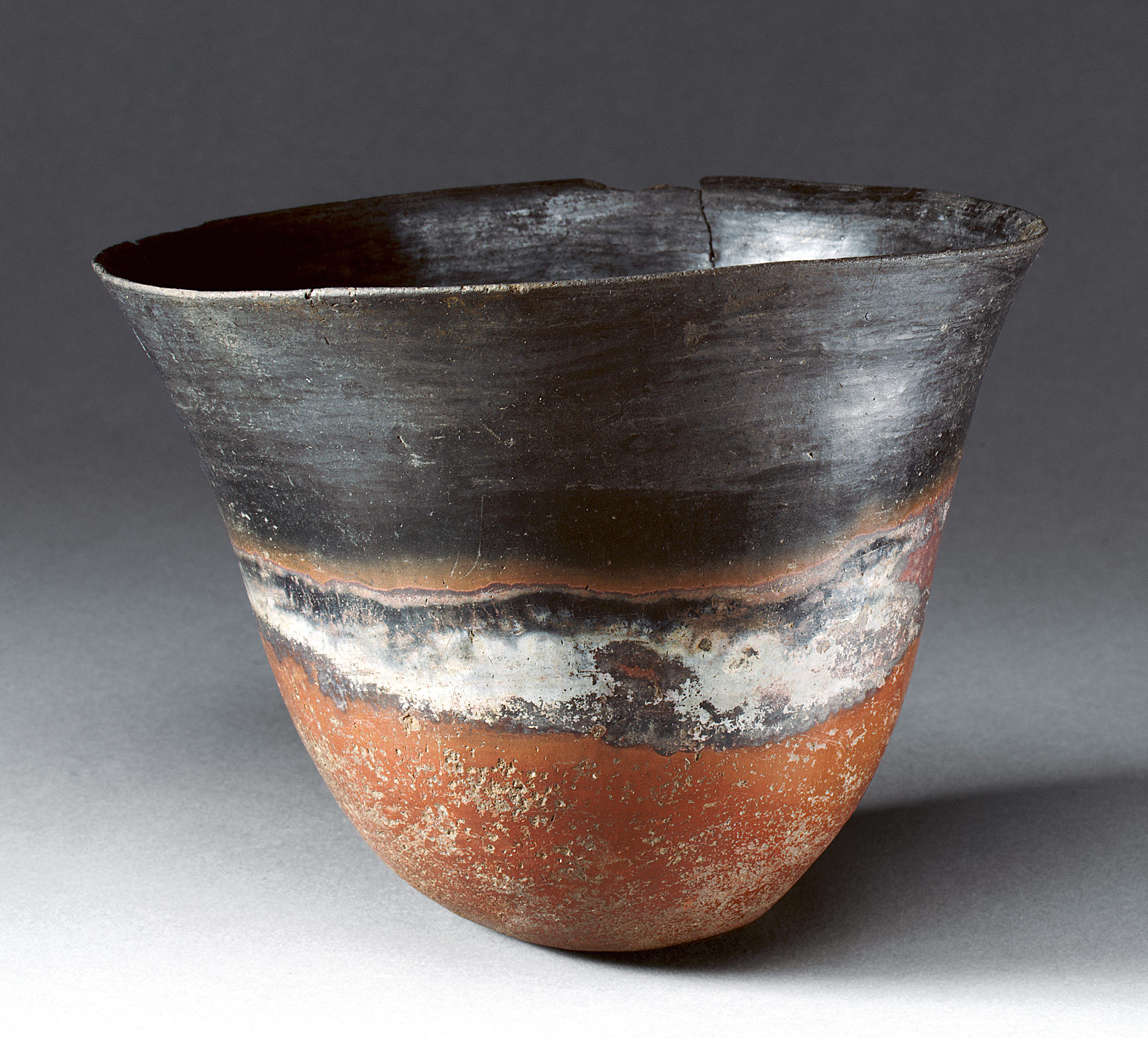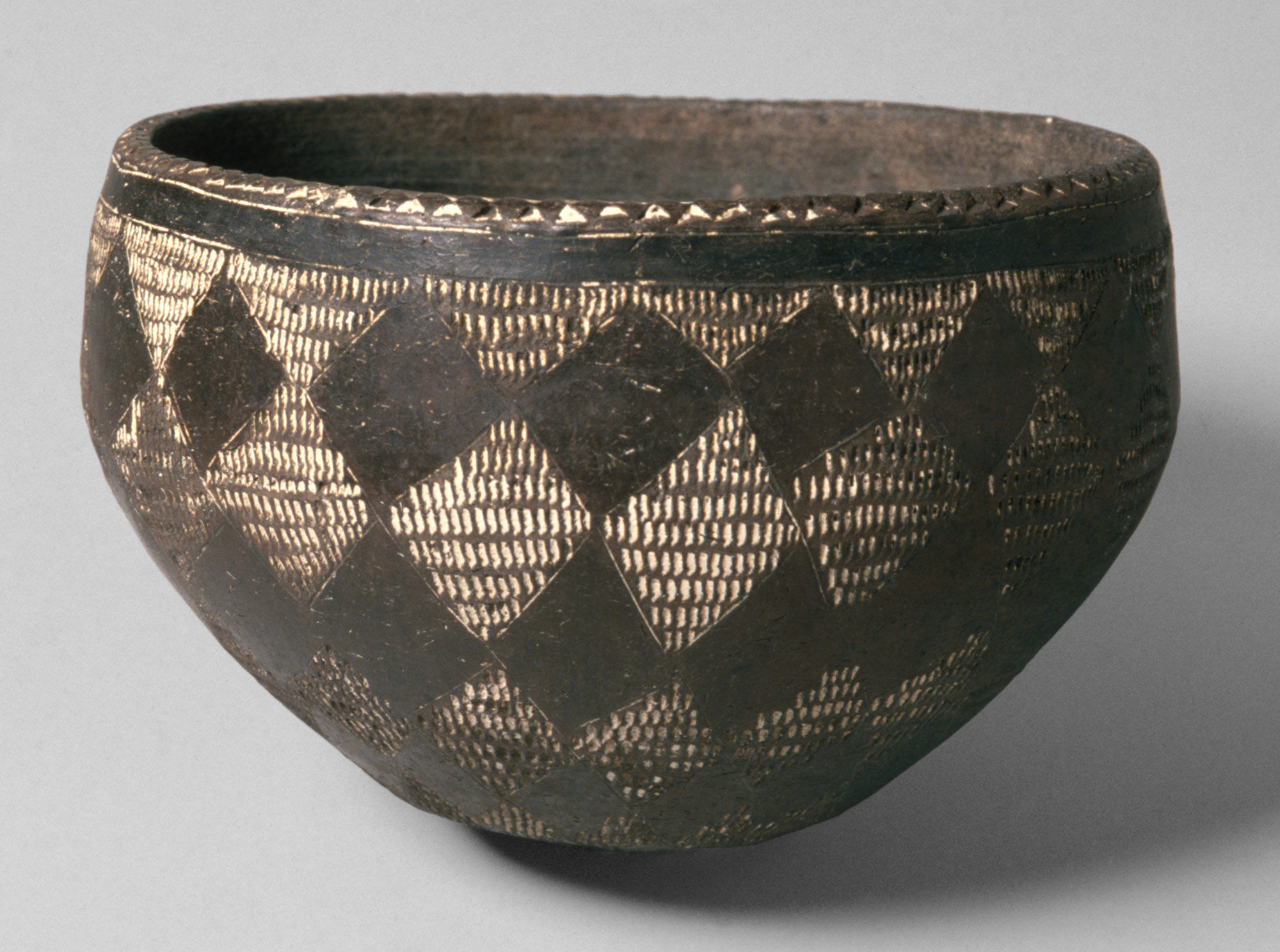The nomadic Medjayu peoples inhabit the Nubian desert in the first millennium B.C. but leave little archaeological record other than pan graves. Egyptians establish control over Lower Nubia, but the C-Group people (descendants of the A-Group) of Lower Nubia continue to produce distinctive forms of pottery. Egyptian goods are traded with the kingdom of Kerma to the south, a culture that buries its kings in vaulted chambers beneath huge earthen mounds, furnished with wood beds inlaid with ivory and bronze. Kerma ware is now considered some of the finest ceramic art produced by any culture at any time.
Sudan, 2000–1000 B.C.
Timeline
2000 B.C.
1750 B.C.
LOWER NUBIA
UPPER NUBIA
1750 B.C.
1500 B.C.
LOWER NUBIA
UPPER NUBIA
1500 B.C.
1250 B.C.
LOWER NUBIA
UPPER NUBIA
1250 B.C.
1000 B.C.
LOWER NUBIA
UPPER NUBIA
Overview
Key Events
-
Medjayu
These nomads from the eastern Nubian desert have alternately peaceful and hostile relations with the more settled populations along the Nile, both in Nubia and Egypt. Highly valued for their military skills, the Medjayu serve as mercenaries in the Egyptian army and desert police force from the late Old Kingdom. At the end of Egypt’s Second Intermediate Period (ca. 1650–1550 B.C.) they play an important role in the expulsion of the Hyksos from the Nile Delta, an event that ushers in Egypt’s New Kingdom. As with most nomadic peoples, the Medjayu left little in the archaeological record. The only physical evidence attributed to them are distinctive burials, called pan graves, that appear sporadically in cemeteries of Upper Egypt and Lower Nubia beginning in the Second Intermediate Period.
-
ca. 2200–1500 B.C.
(C-Group) People of the C-Group culture (descendants of the A-Group) begin to resettle Lower Nubia as Egyptian control weakens. They farm the narrow fertile areas beside the Nile, raise cattle, and trade with the Egyptians during Dynasties 8–11 (ca. 2150–1981 B.C.). In Dynasty 12 (ca. 1981–1802 B.C.), Egyptians reestablish control over Lower Nubia and build a series of forts on either side of the second cataract. These forts are intended primarily to protect Egyptian interests against the powerful kingdom of Kerma to the south, but also serve to subjugate the C-Group people, who seem to have alternately lived peacefully with and waged war against their Egyptian overlords. Although much of their material culture is Egyptianized, the C-Group people in Lower Nubia continue to produce distinctive forms of fine decorated pottery.
-
ca. 2050–1500 B.C.
(Middle and Classical Kerma) Although sometimes an adversary of Egypt, the kingdom of Kerma is also its major trading partner to the south, and Egyptian goods flow freely into the city of Kerma, where they find their way into tombs. During the Classical period of Kerma culture (ca. 1750–1550 B.C.), the kings are buried in vaulted chambers beneath huge earthen mounds. Along with imported goods, they are furnished with rich burial equipment of local manufacture: wood beds inlaid with ivory and bronze; stone and ceramic vessels; bronze weapons and cosmetic implements; jewelry of gold and semiprecious stones. The most distinctive art form is a thin-walled, highly burnished, black-topped red ceramic with an opalescent band of metallic glaze. This classic Kerma ware is some of the finest ceramic art produced by any culture at any time. During Egypt’s Second Intermediate Period (ca. 1650–1550 B.C.) the rulers of Kerma form a diplomatic alliance with the Hyksos kings in the Nile Delta. Kerma occupies the Egyptian forts at the second cataract and expands its control throughout Lower Nubia.
-
ca. 1550–1070 B.C.
Kerma loses control of Lower Nubia at the beginning of Egypt’s New Kingdom, when the Egyptian kings of Dynasty 18 begin a series of campaigns against Upper Nubia. By about 1450 B.C., Egypt controls Nubia as far south as the fourth cataract. Upper and Lower Nubia become a virtual colony of Egypt, ruled by a viceroy called the “King’s Son of Kush.” Egyptian settlements are established and temples are built to Egyptian gods. The most important center is Napata, near the sacred mountain of Jebel Barkal, just downstream from the fourth cataract, where a temple is built to honor the great Theban god Amun. During this period, the majority Nubian population probably participates in the administration of the Egyptian province of Nubia.
Citation
“Sudan, 2000–1000 B.C.” In Heilbrunn Timeline of Art History. New York: The Metropolitan Museum of Art, 2000–. http://www.metmuseum.org/toah/ht/?period=03®ion=afs (October 2000)
